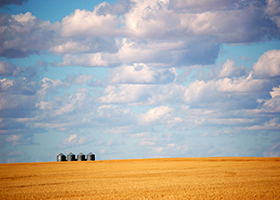


What investors may miss – in the growing season – is what flourishes in the furrows in the fields. That’s an opportunity for diversification.
To be sure, there are managers of agricultural land – Agcapita, Assiniboia Capital Corporation, Sprott Resource Corporation and Hancock Agricultural Investment Group – who run limited partnerships for institutional and high-net-worth investors.
Farmland investment is far from new – it may well be the oldest investment on earth. But what does the data say? Here’s the news from Saskatchewan, courtesy of Marvin Painter:
“An analysis of Canadian farmland risk and return on investment shows that a Farmland Real Estate Investment Trust (F-REIT) would have been a reasonably good investment over the past 35 years. Investors who desire either low or high risk portfolios would not have benefited from an F-REIT investment. However, investors in the medium risk category could have improved the financial performance of their portfolios by including an F-REIT investment. The financial gains from F-REIT result from a level of risk that is lower than REITs and stocks, an expected yield that is greater than for bonds, and a low correlation with other financial asset returns.”
And with foodland disappearing at an increasing rate – half the world’s arable land has been lost since 1960 – there’s some food for thought.
